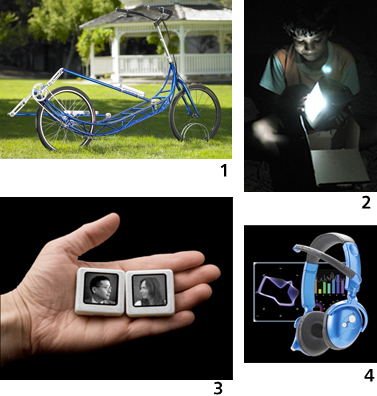If you’ve been looking for MBA programs, you might have come across the phrase “design thinking.” So, what exactly is this, and what does it mean?
Briefly, in terms of business, design thinking is a way of solving problems through the lens of design: using methodologies and strategies to see those problems in terms of an integrated system, and then finding solutions that make sense in terms of the larger system. Typically, design thinking is a human-centered approach, which means that by using insights into psychology and the social science, practitioners can develop solutions that meet the needs of people.
 Design thinking generally goes hand-in-hand with MBA programs that are strong in innovation and entrepreneurship. It makes sense, really – if you want to create new, innovative products, you will need to think about design (and how consumers will use the products) from the very beginning. Honing this approach is one of the reasons why California College of the Arts’ MBA in Design Strategy is popular with entrepreneurial-driven students.
Design thinking generally goes hand-in-hand with MBA programs that are strong in innovation and entrepreneurship. It makes sense, really – if you want to create new, innovative products, you will need to think about design (and how consumers will use the products) from the very beginning. Honing this approach is one of the reasons why California College of the Arts’ MBA in Design Strategy is popular with entrepreneurial-driven students.
CCA’s program, along with those at other b-schools – including Stanford, Insead, and the Rotman School of Management at the University of Toronto – show a widening adoption of design thinking and strategies into traditional business curriculum. By integrating design thinking, these programs tout an integrative, human-centered (and often multidisciplinary) approach to the traditionally by-the-numbers nature of business. Rotman’s website points out some of the core philosophies behind its program:
Whether the goal is to develop new products or services, create new ways of marketing to customers or reinvent an entire business model, ‘design thinking’ helps get bigger ideas, faster and more efficiently. We believe the mindset and methods behind great design are the same ingredients for successful Business Design. By incorporating the ‘design experience’ into our curriculum, we offer students a unique and valuable opportunity to learn new ways to tackle complex challenges in deeper and more holistic ways.
However, some observers aren’t sold on the benefits of design thinking, and believe that it means little more than adding a new coat of paint to an old product. Peter Merholz, in a post titled “Why Design Thinking Can’t Save You” on Hass Business Review’s Blog, calls recent media attention to design thinking “fetishistic,” and says that:
“Design thinking is trotted out as a salve for businesses who need help with innovation. The idea is that the left-brained, MBA-trained, spreadsheet-driven crowd has squeezed all the value they can out of their methods. To fix things, all you need to do is apply some right-brained turtleneck-wearing ‘creatives,’ ‘ideating’ tons of concepts and creating new opportunities for value out of whole cloth.”
Indeed, the turtleneck-wearing creative crowd sometimes gets a bad rap, because many assume that design is only concerned with outward aesthetics. In a TED talk, author Tim Brown (whose book “Change by Design: How Design Thinking Transforms Organizations and Inspires Innovation” is required reading in some design-oriented MBA programs,) says that when designers (possibly while wearing turtlenecks) create new designs that simply repackage existing products, they are thinking small. He posits that design thinking should be much more than just reskinning a product – in fact, by thinking big and perceiving problems through a human-centered and design-oriented paradigm, we can solve some of our most pressing challenges, including climate change and access to healthcare.
Of course, these challenges require more than just a new coat of paint.
If you’re interested in learning more about design thinking, It’s definitely worth checking out Tim Brown’s TED talk:

